HP S430c Curved Ultrawide Monitor Review
An ultra-wide monitor ideal for working at home
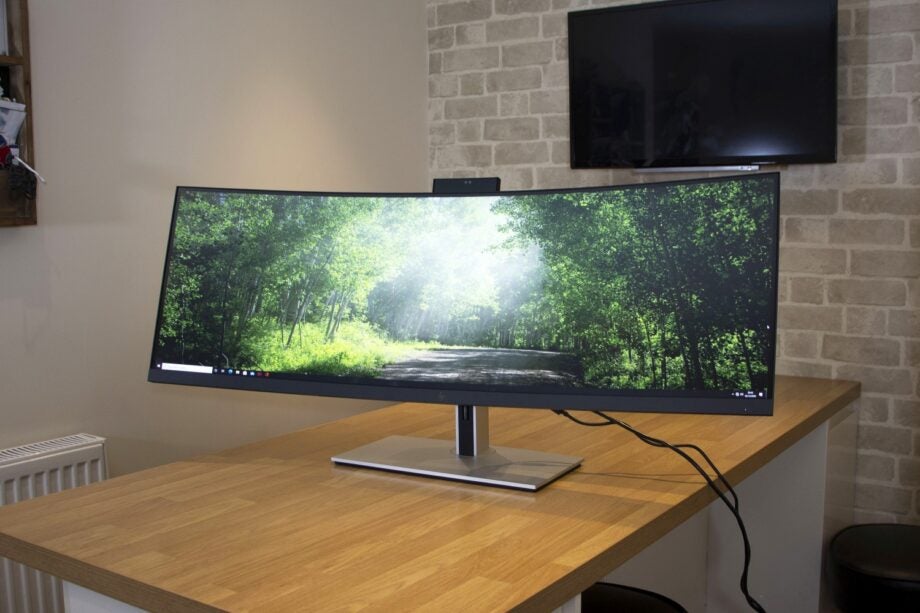

Verdict
The HP S430c has fantastic features that allow multiple systems to be controlled with one set of peripherals, while also offering a webcam, plenty of ports, great build quality and a surprising degree of adjustment. Image quality is decent, too – although not quite good enough for high-end, colour-sensitive work.
Pros
- Impressive screen-sharing options
- Great connectivity
- Solid mainstream image quality
- Robust build quality
Cons
- Not good enough for colour-sensitive work
- Higher resolutions available elsewhere
- No DCI-P3 or Adobe RGB ability
Key Specifications
- Review Price: £959
- 43.4-inch (3840 x 1200) VA panel
- 5ms response time
- Refresh rate: 60Hz
- 2 x USB-C, 4 x USB 3.1
- Weight: 16kg
The HP S430c is a vast, impressive monitor that combines an ultra-wide design with innovative features to make working life easier.
But this display uses VA technology rather than IPS, and its UK and US prices of £959 and $999 mean it’s an expensive option for enhancing your office.
Design
The HP S430c may be expensive, but it sports a superb form factor that will make work easier in lots of different office scenarios.
The 43.4-inch diagonal is paired with a 32:10 aspect ratio and an 1800R curve, all combining to deliver an immersive experience. It’s like having two 24-inch screens set up next to each other – but with better viewing angles, greater consistency and fewer bezels. If you currently work across two screens on your desk, then moving to a monitor such as this could do wonders for your workflow.
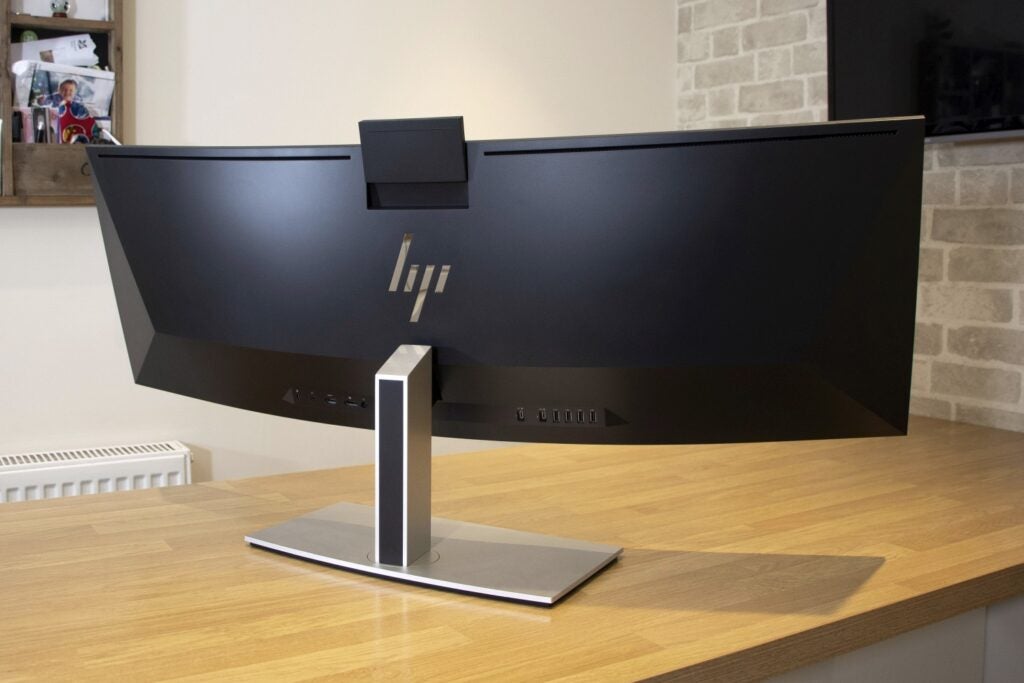
The S430c has a 3840 x 1200 resolution, which means it has the same number of horizontal pixels as a 4K display, alongside more height than a 1080p panel. The width is understandably generous, and the extra height means you’ve got more on-screen real estate than you may be used to.
The only issue is that the resolution and size deliver a density level of 93ppi. For the vast majority of everyday tasks that’s easily good enough – clear and sharp. But if you work with images or creative tools and have a need for greater detail, then conventional 4K panels will be crisper, and rival widescreen displays will offer higher resolutions on both axes.
The HP’s hefty size and decent resolution is joined by smart features elsewhere. The most eye-catching is the HP Device Bridge, which allows the screen to display inputs from two different devices side by side. It also allows users to control the two with a single keyboard and mouse, with the cursor swooping between the two.
It works on Windows, MacOS, Android and Linux, and it also allows you to drag-and-drop files between your two systems if you’re using USB-C as a connection. It worked smoothly throughout testing, but you’ll need to have HP’s software installed on all connected devices. It’s superb: KVM-style functionality and beyond, but without the need for KVM hardware. It’s also bolstered by versatile picture-by-picture options.
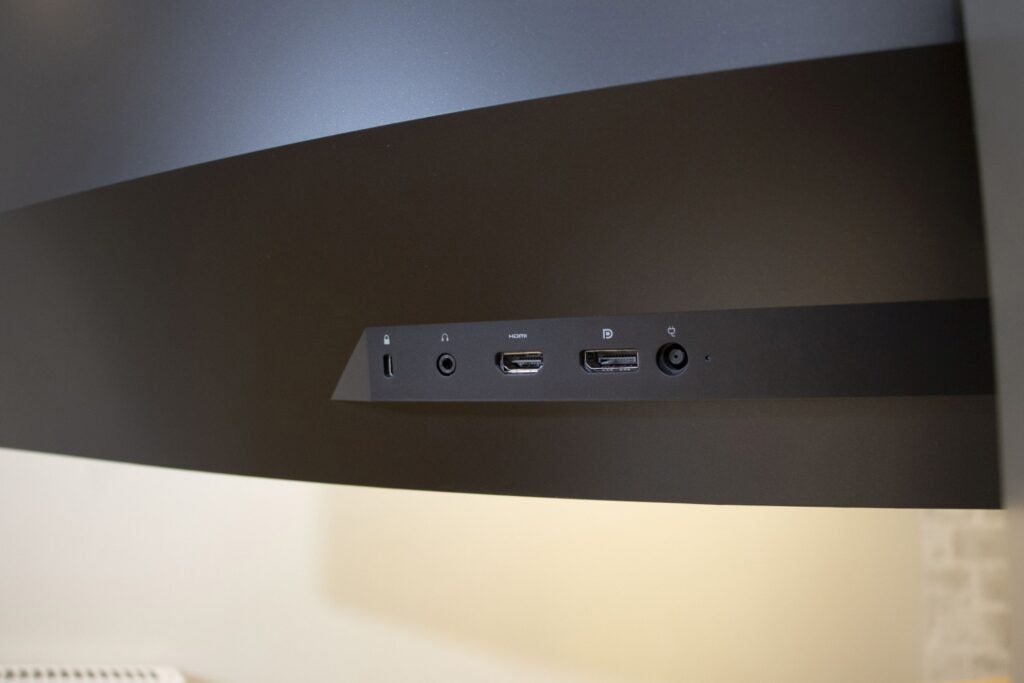
Those USB-C ports can also charge hardware with up to 65W of juice, so you could easily power a laptop using this screen. Elsewhere, the HP has four full-sized USB 3.1 ports and single HDMI and DisplayPort inputs alongside an audio jack and a security lock-slot. The ports face outwards, which makes them easy to access unless the display is right up against a wall.
The HP also comes with a 1080p IR webcam, which works with Windows Hello for facial recognition. The webcam features dual microphones and can be hidden behind the top bezel for privacy. Quality is middling and its movement is a bit clunky, but it’s a welcome addition nonetheless.
Build quality is superb and the overall design is super sleek, with slim bezels, a wide metal base and a minimal stand. The monitor offers height, tilt and swivel adjustment too, which is decent for a large widescreen, and it works with 100mm VESA mounts. Physically, there’s plenty to like, although its 1057mm width and 16kg weight make it a significant bit of kit to fit on any desk, while the stand offers no cable management.
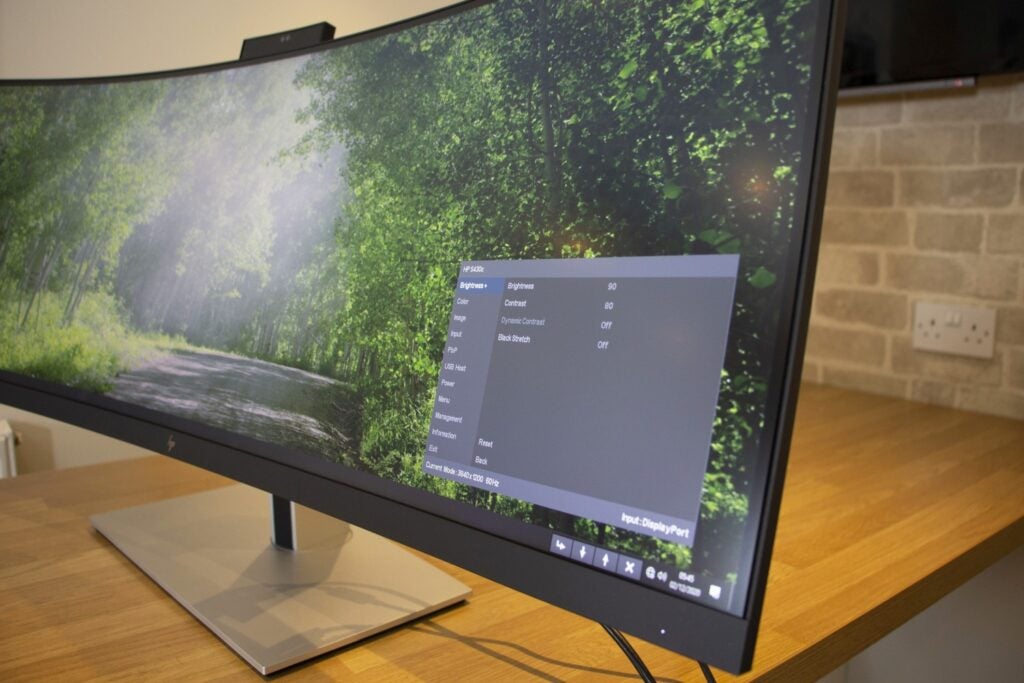
On the inside, the HP uses VA technology with 8-bit colour, without any HDR designation. This is clearly an area where the budget has constrained – VA doesn’t match 10-bit IPS panels for pure image quality, although for many office scenarios it shouldn’t be a problem. The HP’s anti-glare finish makes the monitor easier to live with, but note that it has a maximum refresh rate of only 60Hz. Again, for the vast majority of work tasks this will be fine; but it isn’t ideal if you want fast, smooth animation – or a screen for gaming as well as work.
HP’s on-screen display looks underwhelming, then, but it comes with a good range of options that include all of the usual settings alongside tweaks to display input preferences, USB operations and power consumption levels. It’s managed by a row of buttons that sit beneath the bottom bezel, which are fine albeit unremarkable.
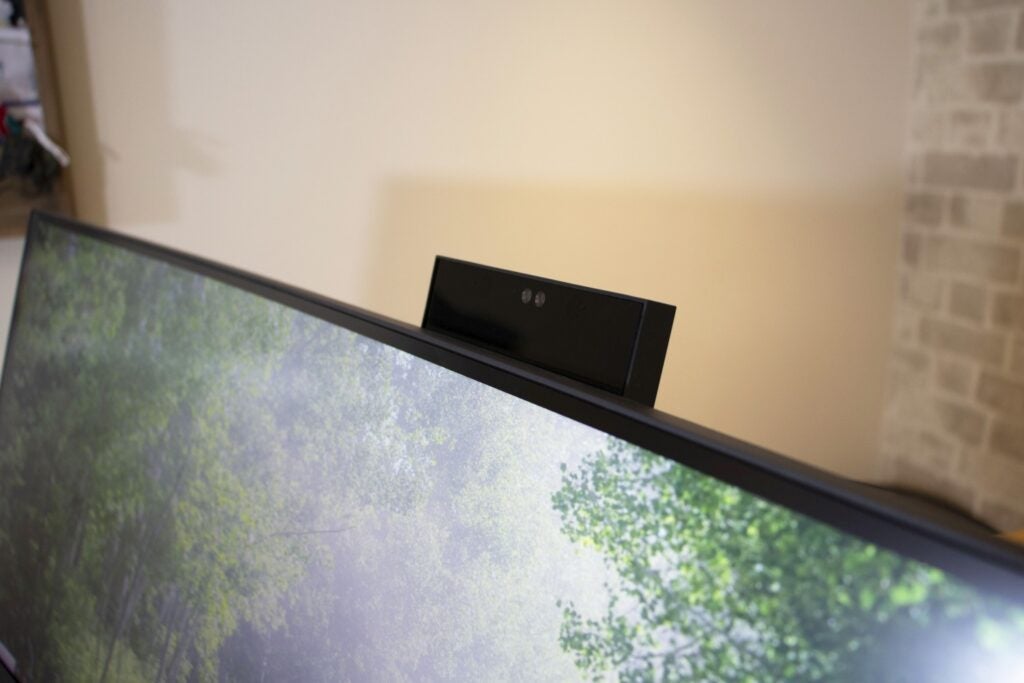
Image quality
True to form, the HP S430c offers decent image quality that’s rarely outstanding. VA panels tend to do well with contrast, and the HP’s brightness of 340 nits is paired with a black level of 0.14 nits.
The resulting contrast ratio of 2429:1 is fantastic – twice as good as comparable IPS panels. In real-world terms, it means you get huge punch and vibrancy, with bold colours and darker areas with impressive depth.
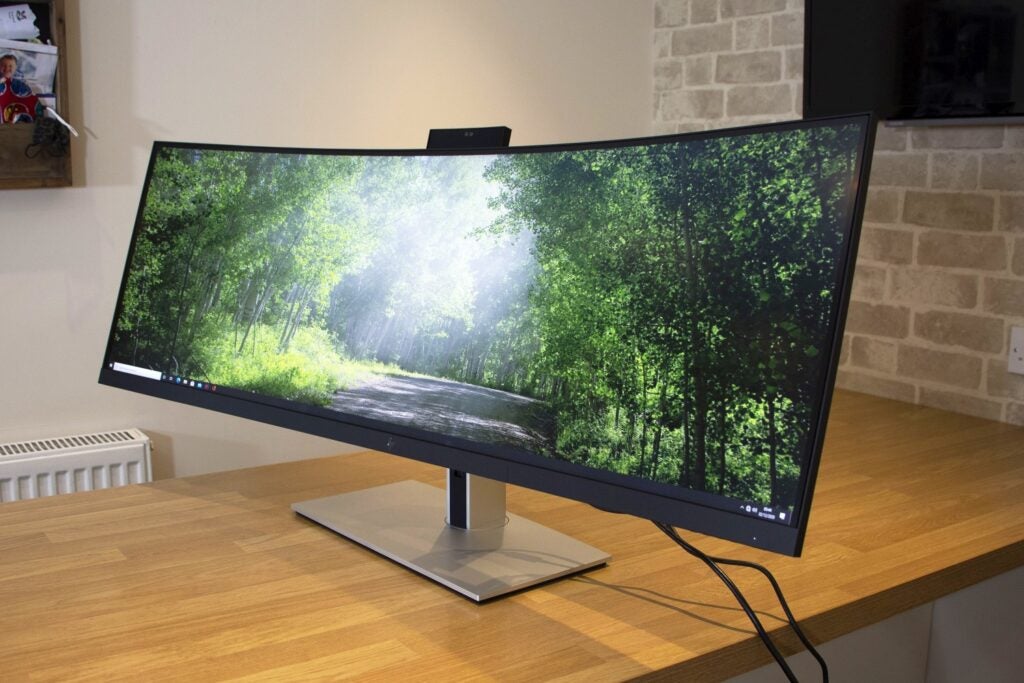
The HP’s colour temperature of 6487K is superb too, although the panel’s Delta E of 2.44 is only good, rather than great. As such, the HP isn’t quite able to produce the accuracy required for high-end image work. And, while the HP displays a solid 98.7% of the sRGB colour gamut, it only produced 85% of the DCI-P3 gamut and 77.9% of the Adobe RGB colour space. Those results mean this panel will struggle to handle demanding, colour-sensitive tasks.
The HP’s results were maintained across its various colour modes and at different levels of brightness, and the monitor’s uniformity was excellent with a maximum brightness deviation of 6% on a screen of this size is tremendous.
Should you buy it?
The above results show that the HP S430c will not suffice for every work task; it’s lacking the colour quality and sharpness to handle high-end photography and design. For those instances, conventional 4K displays with IPS technology will prove better.
There are plenty of other ultra-wide displays around too, with the HP S430c facing stiff competition from the likes of the Philips Brilliance 499P9H and Samsung Odyssey G9, which offer a greater number of pixels and are of a larger physical size, albeit at the expense of image quality and features. Depending on your workload and what else your display will be used for (i.e. gaming), both the above alternatives could be better.
However, if colour quality and image resolution aren’t crucial, and you need a simpler, cleaner way of managing multiple machines and monitors, the HP S430c makes a lot of sense. The monitor’s multi-input options are great, quality levels are decent throughout, and the panel comes with superb connectivity and adjustability. It isn’t cheap, but it’s certainly very accomplished and adaptable.


